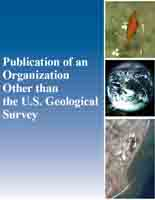Improving inferences about private land conservation by accounting for incomplete reporting
Links
- More information: Publisher Index Page (via DOI)
- Download citation as: RIS | Dublin Core
Abstract
Private lands provide key habitat for imperiled species and are core components of function protected area networks; yet, their incorporation into national and regional conservation planning has been challenging. Identifying locations where private landowners are likely to participate in conservation initiatives can help avoid conflict and clarify trade-offs between ecological benefits and sociopolitical costs. Empirical, spatially explicit assessment of the factors associated with conservation on private land is an emerging tool for identifying future conservation opportunities. However, most data on private land conservation are voluntarily reported and incomplete, which complicates these assessments. We used a novel application of occupancy models to analyze the occurrence of conservation easements on private land. We compared multiple formulations of occupancy models with a logistic regression model to predict the locations of conservation easements based on a spatially explicit social-ecological systems framework. We combined a simulation experiment with a case study of easement data in Idaho and Montana (United States) to illustrate the utility of the occupancy framework for modeling conservation on private land. Occupancy models that explicitly accounted for variation in reporting produced estimates of predictors that were substantially less biased than estimates produced by logistic regression under all simulated conditions. Occupancy models produced estimates for the 6 predictors we evaluated in our case study that were larger in magnitude, but less certain than those produced by logistic regression. These results suggest that occupancy models result in qualitatively different inferences regarding the effects of predictors on conservation easement occurrence than logistic regression and highlight the importance of integrating variable and incomplete reporting of participation in empirical analysis of conservation initiatives. Failure to do so can lead to emphasizing the wrong social, institutional, and environmental factors that enable conservation and underestimating conservation opportunities in landscapes where social norms or institutional constraints inhibit reporting.
Study Area
| Publication type | Article |
|---|---|
| Publication Subtype | Journal Article |
| Title | Improving inferences about private land conservation by accounting for incomplete reporting |
| Series title | Conservation Biology |
| DOI | 10.1111/cobi.13673 |
| Volume | 35 |
| Issue | 4 |
| Publication Date | March 08, 2021 |
| Year Published | 2021 |
| Language | English |
| Publisher | Society for Conservation Biology |
| Contributing office(s) | Coop Res Unit Seattle |
| Description | 12 p. |
| First page | 1174 |
| Last page | 1185 |
| Country | United States |
| State | Idaho, Montana |


